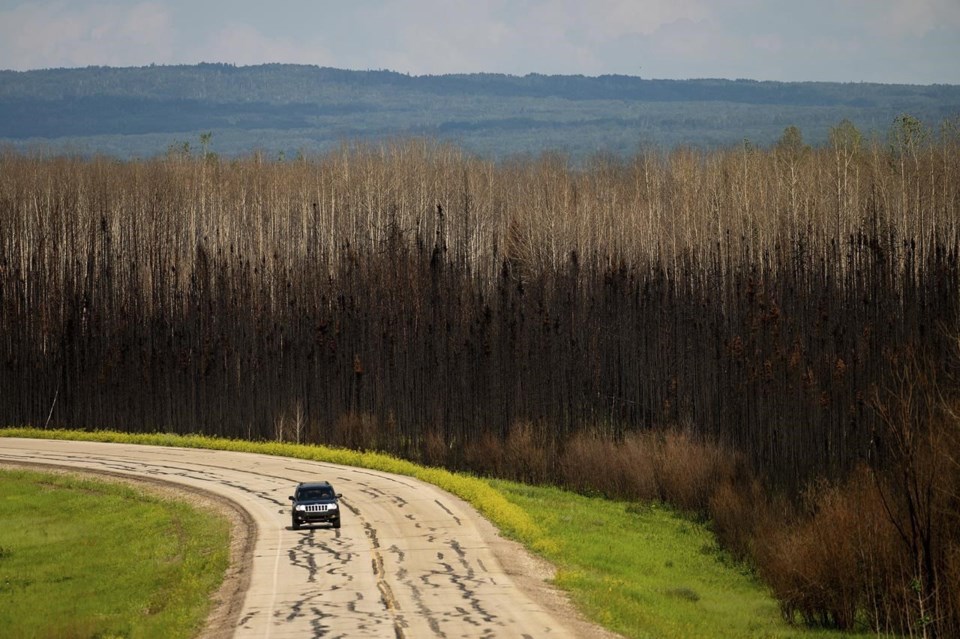EDMONTON — Last year's record wildfires in Alberta destroyed habitat for threatened species and will change the makeup of the province's forests for decades to come, says a new report.
And the assessment from the Alberta Biodiversity Monitoring Institute — a body funded by the University of Alberta and a provincial research agency — says the chance of a repeat of 2023's massive burn poses an ongoing challenge for both conservation and industry.
"The future of fire, and how land managers and industries respond to it, will determine the sustainability of Alberta’s forests in the coming years," the report concludes.
Last summer, a total of 1,088 wildfires burned about 22,000 square kilometres across the province from March 1 to Oct. 31. That's about five times the five-year average.
Alberta was a major contributor to forest losses across sa╣·╝╩┤½├¢, which were so great they accounted for a 24 per cent increase in global tree cover loss, says a separate report from the World Resources Institute released Thursday.
The Alberta Biodiversity Monitoring Institute report finds more than 28 per cent of the forest in Alberta's northeast corner burned. That region is remote and little-used.
But more than 10 per cent of the economically vital foothills region was burned. That region is home to much of Alberta's logging industry, as well as energy development, which also take a toll on the forest.
Several forestry companies lost between a tenth and a third of their harvestable trees.
"This represents the equivalent of more than a decade of forest harvest, impacting assessments of harvest sustainability in the future," the report says.
The fires also lowered the average age of Alberta's forests, a crucial figure in determining which forests can be harvested.
Spruce and pine stands, some of the province's most economically valuable, are now on average six and eight years younger.
The impacts aren't limited to industry.
"An increased frequency of extreme fire years with the added effects of human disturbances will drive declines in forest age, representing potential rapid, large-scale and ongoing changes in habitats and resulting biodiversity which could undermine ecosystem function," the report says.
Some species are already suffering.
Caribou herds, which have already lost the vast majority of their ranges to industry, lost more of them to fire. Losses range from more than five per cent in treed lowlands to as much as nearly 14 per cent in northern ranges.
The report warns that shrubs regrowing in burned-over areas attract moose and deer, which are likely to draw predators that also prey on caribou.
"Larger populations of predators will put these threatened herds further at risk," says the report.
Aspen Dudzic of the Alberta Forest Products Association said industry is still assessing the effects of last year's fires and how they will affect harvesting plans.
"There still needs to be some work done," she said.
"We make area-specific adjustments to our plans. It's difficult to say what those adaptations are going to look like."
But she said industry is used to working with and around fire.
"We operate in a forest that's disturbance-driven," she said.
Increasing wildfires have long been forecast by climate scientists as regions like Alberta become hotter and drier. Much of the province is already under extreme drought and the government moved the start of the wildfire season up by 10 days to begin on Feb. 20.
"The critical question is whether the fire season of 2023 represents a rare event or whether the coming decades will see more fire years like 2023, particularly in the face of a changing climate," the report says.
This report by The Canadian Press was first published April 4, 2024.
Bob Weber, The Canadian Press



